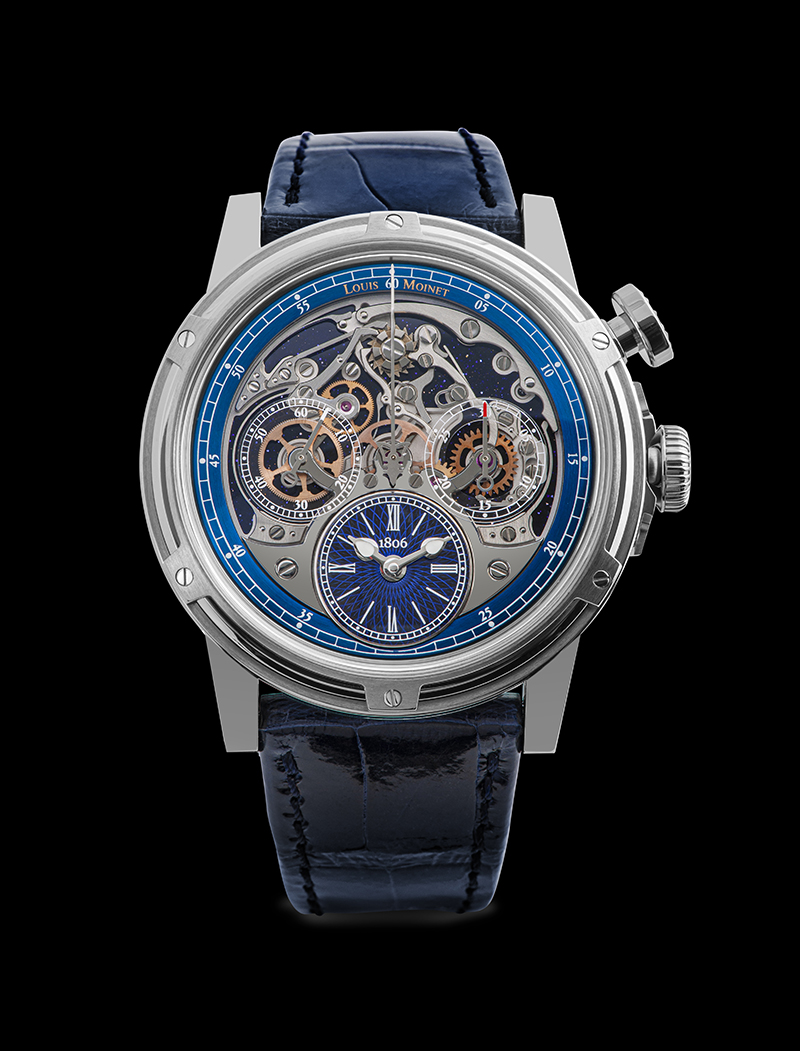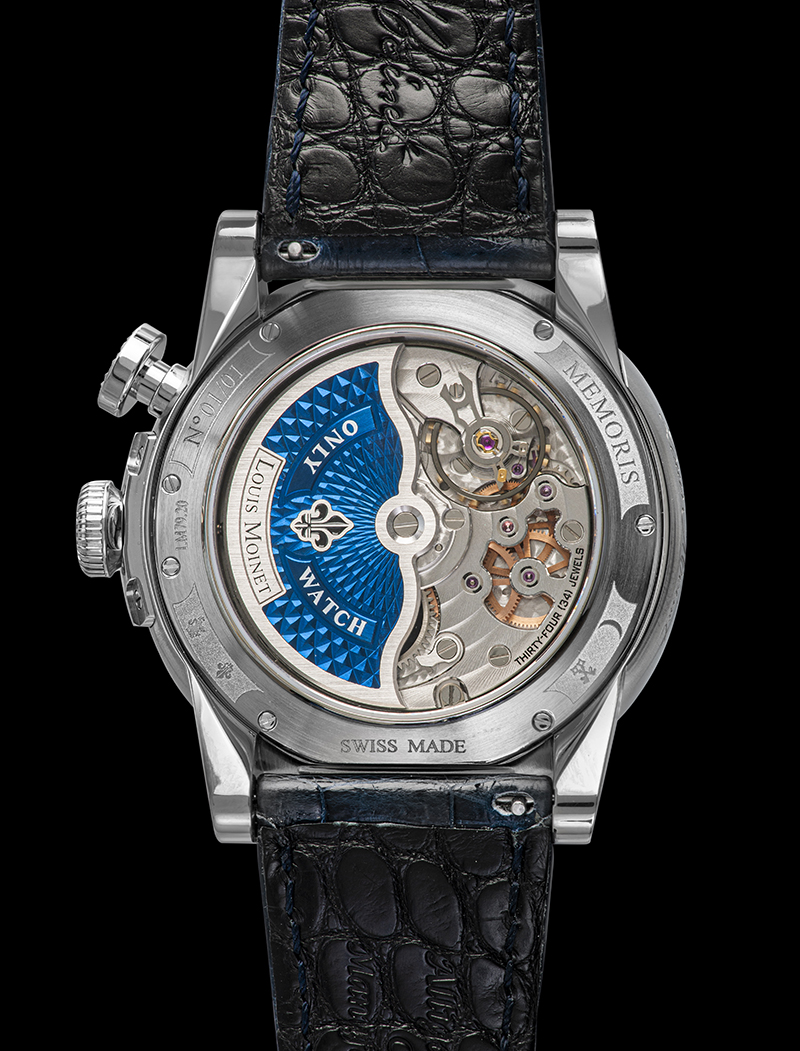(Editor’s note: The Only Watch charity auction raises funds to draw attention — and find a cure for — to Duchenne muscular dystrophy, or DMD, a genetic disorder which causes the gradual loss of basic motor functions, including the ability to walk, among children. The Only Watch auction, which supports the Association Monegasque contre les Myopathies, is on its eighth edition this year. It has raised more than 40 million euro in its previous seven outings. The 2019 edition is scheduled on November 9 in Geneva.)
ANY mention of Louis Moinet would inevitably lead to talk of how the watchmaker (after whom the present brand is named) created what could possibly be the first chronograph/stopwatch — something which became known only in 2013 with the discovery of Moinet’s Compteur de Tierces, a pocket watch built in 1816, according to markings on its case. Before this timepiece was found, the oldest known chronograph was the one built in 1822 by Nicolas Rieussec.
Of course, no company would pass up this good a marketing chance. And so the Louis Moinet brand in 2016 brought out the Memoris as a way to celebrate the Compteur de Tierces’s 200th anniversary.

Now, the Memoris, without question, has a lot to live up to. The Compteur de Tierces is significant to horology not only because of its age — that’s a lot like saying Louis XIII cognac is great only because it takes about a century to make, all the while disregarding the 1,200 different eaux-de-vie comprising the blend — but also because this timepiece is a true engineering marvel. The Compteur de Tierces can time events to the 60th of a second using start, stop and reset functions. It has a balance wheel which is said to beat at a truly dizzying rate of 216,000vph. Zenith’s phenomenal commercial version of its Defy Inventor, announced at this year’s Baselworld, spins at 129,600vph.
Distinguishing the Memoris from other chronographs is its integrated, self-winding, monopusher chronograph mechanism using a column wheel and a horizontal clutch that is found on the dial side of the movement, rather than at the back. Louis Moinet then made sure this shift would be noticed by stripping away as much of the dial as it could get away with. So quite visible on the Memoris’s dial (well, what’s left of it) are most of the 147 components that make up the chronograph mechanism; the column wheel stars at 12 o’clock.
Actually, what Louis Moinet pitches as an original touch in the Memoris’s movement is that the chronograph section is separate from the automatic ticker altogether, allowing the former to take the lead role.
The column wheel, in this instance, has two parts connected to one another — the six columns on top and the cog base. The cog ensures the column wheel is always correctly in place, and controls its rotation, too. The six columns, together with the minutes hammer, blocking lever and clutch, orchestrate the chronograph’s functions. When these are activated (via a monopusher) the workings can be seen clearly through the “dial.” A 30-minute counter at 3 o’clock reads out the elapsed time, the central hand calls out the seconds.

Oh, and yes, the Memoris tells the time, too. That’s what the subdial at 6 o’clock (for the hours and minutes) and the small second subdial at 9 o’clock are for.
A plate made from deep blue aventurine, and which is mottled with “stars,” recall the function served by the Compteur de Tierces — to time various astronomical goings-on. A thin strip of dial, in a lighter shade of blue, frames the Memoris’s mechanical bits. The subdial for the hours and minutes is also finished in lacquered blue, but gets a guilloché flourish. The counters and flange are translucent so that as much of the chronograph components show through.
The back of the Memoris’s substantial 46-millimeter titanium case is just as voyeuristic; a sapphire crystal window shows Louis Moinet’s 34-jewel cal. LM54, which beats at a conventional 28,800vph and has a 48-hour power reserve. Prominently inscribed on the rotor, decorated with a lacquered blue concentric Clou de Paris pattern, are the Louis Moinet brand and fleur-de-lis, as well as “ONLY WATCH”. Among the things engraved on the titanium caseback surrounding the sapphire crystal window is “N°01/01”.
For a noble cause, a special watch has just become even more special.




